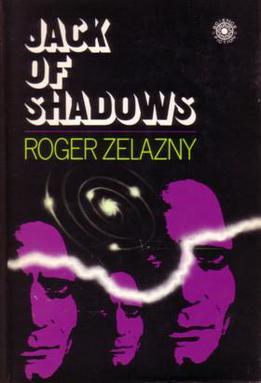 On the suggestion of a family member, I recently read an older sci-fi/fantasy novel called Jack of Shadows by Roger Zelazny (the person recommending it is an English professor who loves Doctor Who, so it is easy to give his recommendation some credence). I am being accurate in labeling it both science fiction and fantasy as it takes place in a distance future where the Earth has long since stopped rotating (to be more accurate, it is in synchronous rotation) and while the residents of the day-side have continued to advance in science, the dark side has taken to the arcane arts and maintains a feudal society based on seats of magical power. In this world, the protagonist, Jack of Shadows, was born of the twilight zone and as a result has magic that is rooted to shadows themselves rather than any geographical location.
On the suggestion of a family member, I recently read an older sci-fi/fantasy novel called Jack of Shadows by Roger Zelazny (the person recommending it is an English professor who loves Doctor Who, so it is easy to give his recommendation some credence). I am being accurate in labeling it both science fiction and fantasy as it takes place in a distance future where the Earth has long since stopped rotating (to be more accurate, it is in synchronous rotation) and while the residents of the day-side have continued to advance in science, the dark side has taken to the arcane arts and maintains a feudal society based on seats of magical power. In this world, the protagonist, Jack of Shadows, was born of the twilight zone and as a result has magic that is rooted to shadows themselves rather than any geographical location.
In this story Jack, a thief, finds himself quickly at odds with some daysiders that results in his death (which seems to merely be a temporary inconvenience). When he returns to being, he takes on a long-term mission of vengeance against those that wronged him. This journey leads him on a quest for power which, as we all know, corrupts. But Jack was never really the good guy to begin with, so a turn from shady to deeper shadow is not all that out of character.
While the story was a rather short novel, the world that Zelazny imagined in it had a lot of potential for further exploration and was well thought out. Though it showed some of its age in the portrayal of technology. For instance, Jack ends up spending some time dayside using up computer time at a university. Given that the book was published in 1971, it is no surprise that computers could hardly be depicted in any other way than as mainframe systems that process data and spit out print results. And one item that struck me as odd was the use of candles as the primary source of artificial light everywhere. I guess electricity was not likely distributed well darkside, and dayside there was hardly need of lights if there was window access, but it seemed a little odd and was something on which the author failed to elaborated.
Generally though, I rather enjoyed the story. It was a far cry from most of what I’ve grown accustomed to reading lately, but definitely in a good way. It has led me to consider broadening my literary horizons – perhaps by reading more of Zelazny’s works. But we shall see what lands on my reading list next. A bunch of co-workers (many of which have Nooks) have expressed an interest in starting a small book club where we actually read in coordination. If that happens, it will likely shape my reading list for a time and I may find myself peppering those reviews with notes from the group. And as always, I’m open to suggestions on new books.